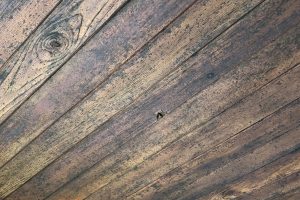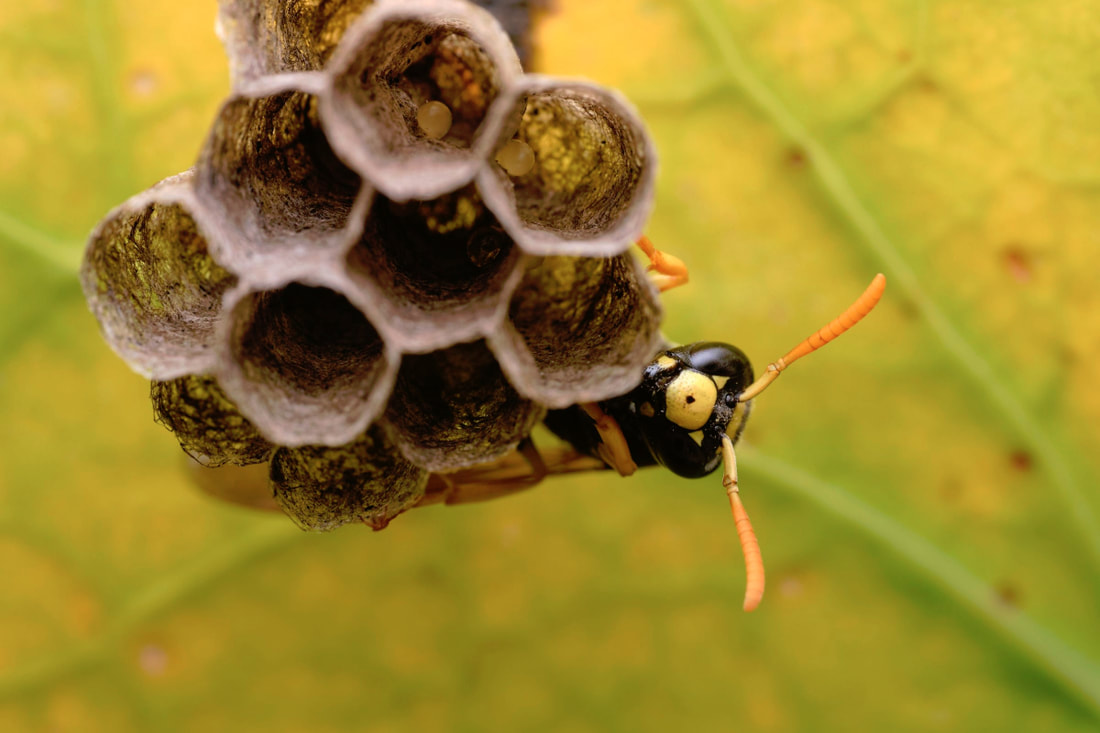|
Wasps are usually an outdoor problem, of course, but it’s almost summer! A time when interiors and exteriors are far more open to one another. Perhaps surprisingly, wasps are actually a beneficial insect. They eat virtually all pest insects and larva in your garden and lawn, and like bees, they are pollinators. But unlike bees, they are far more aggressive, and they can make a mess of your outdoor wood furniture, decks and fences, plus I'm really allergic to them.  So how do you get the benefits of wasps without the downsides of them nesting too close to your home, chewing on your wood or potentially stinging you? The trick I use is teak oil. What is Teak Oil? Various products are called teak oil. These products usually are made of tung oil, linseed oil, and potentially some varnishes or thinners depending on the product. This article from Canadian Woodworking has a good break down of the different types of oil. If you are looking for a more environmental product, you’ll want to look for “raw” and “pure” oils. Boiled Linseed Oil (BLO) has additives. When protecting against wasps, I’ve used various tung-oil products. Why tung oil works There are two ways in which tung oil is effective: first, it conditions and moisturizes your wood and then cures to create a hard finish. With proper care and application (I’ll discuss that in an upcoming post!), this will get rid of the slivers or bits of wood that peel off and allow the wasps to start chewing. There is an additional effect I’ve noticed, which is that they just seem to hate it. I have looked for any definitive explanations for this, but I haven’t found any yet. So instead, here are my and my sister Carmen's anecdotal experiences. Lenore’s experience I am allergic to wasps, and so keeping them away is pretty important. Earlier this summer, during wasp house-hunting season, we had four straight days of wasps getting into the apartment. On day five I knew I needed to take action. Out came the teak oil (I used Circa 1850 Tung ‘n Teak Oil) and a paint brush and I got to work. I applied oil everywhere I thought they might be getting in. We live on the 9th floor of an apartment building, and they were clearly coming in through somewhere on the balcony. I applied lots of oil on non-wood surfaces: the metal grill vent to the air conditioner, around the patio door, and on the bricks that I have as plant stands. Then I applied oil to my wooden furniture outside: on the underside of the bench and picnic table, in all the joints of the outdoor chairs. While I was applying the oil, four wasps came flying towards the balcony, reacted like they had hit a glass wall and veered away. We have had no wasps come past the railing since. Our neighbours have had wasps all summer, and there are several visible wasp nests on some of the buildings balconies. Sadly we have not had bees either – we have flowers and usually get bees. We have had butterflies at the same rate as other teak free years. Carmen’s experiences We’ve been using this trick since we lived in a second-floor apartment with a large balcony. Wasps had begun building nests under out outdoor chairs, and so drastic measures were taken. The next year, we treated the chairs with tung oil, and the wasps did not build any more nests on our chairs or balcony. When we bought our current home, one of the things we loved about it was the front porch. There is a lot of wood on the porch, and in our first summer we saw that wasps were flying into small holes in the ceiling of the porch. The small hole in the ceiling was like a doorway for wasps. We applied tung oil liberally to the ceiling of the porch, and also treated our outdoor furniture. The wasps left the ceiling alone, and have not built nests in any of our common areas. How to apply teak oil If you are applying it to wood, it can have an effect on the colour, so you should try a test area first. If you are using it mainly for finishing, then come back soon for a full explanation of the process of sanding and applying the oil. For wasp repelling, you can stick to undersides or out-of-site areas. You can do a little light sanding to raise the grain, but it’s not as important. Do slather holes or little places that might offer the kind of cover they want for their nests. Tung oil can take quite a while to cure, so be aware of that if you are applying it to surfaces that you interact with (like seats or arms of chairs). It may feel tacky for a couple of days. If you are applying to non-wood surfaces (like the air conditioning grate), be aware that this is not a recommended use. If you care about the look of the item in question, make sure you do a test patch. Do you have any tried and true wasp repellent? Or a reason why tung oil works? Let us know! And if you try this and it helps, let me know your experiences! You can also find me on facebook, pinterest, or Instagram
0 Comments
Your comment will be posted after it is approved.
Leave a Reply. |
What Our Clients Are SayingI can’t imagine what we would have done without Lenore’s design support for our Centre’s new office. As a not-for-profit organization, we were truly excited about creating our space but we were also completely out of our element. Lenore’s expertise, ideas, talent and connections made a complex process infinitely more manageable. We are forever grateful to her for working with us to create a beautiful, bright and professional space for our clients, staff members and volunteers. We love our new space. |
Contact Us |
Design For ADHD | Home Renovation
Lenore Brooks Design offers Interior Design Services to clients across Kitchener, Waterloo, Cambridge, and Guelph, Ontario.
For Interior Design Services, Contact Lenore Brooks Design in Kitchener, ON
Lenore Brooks Design offers Interior Design Services to clients across Kitchener, Waterloo, Cambridge, and Guelph, Ontario.
For Interior Design Services, Contact Lenore Brooks Design in Kitchener, ON


 RSS Feed
RSS Feed